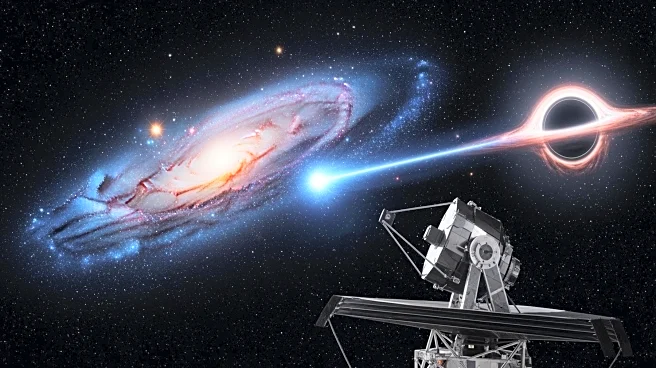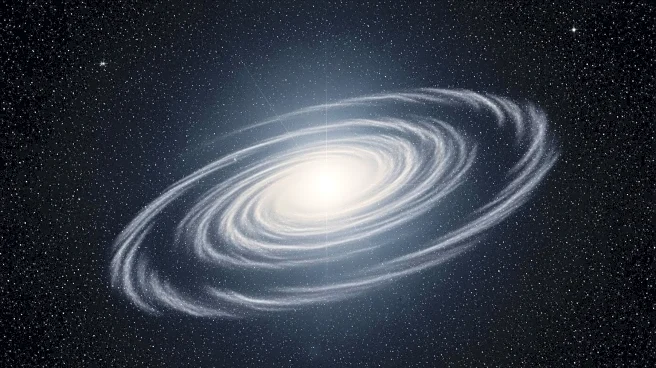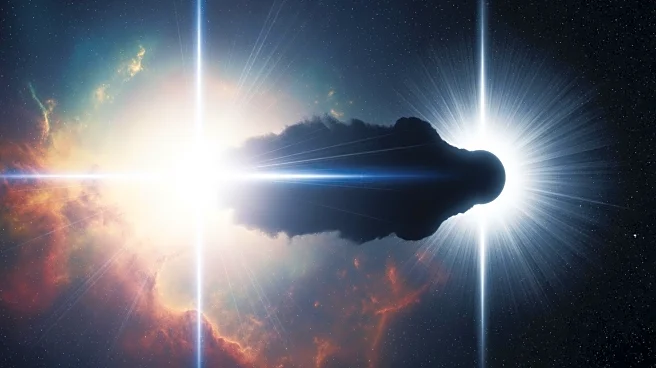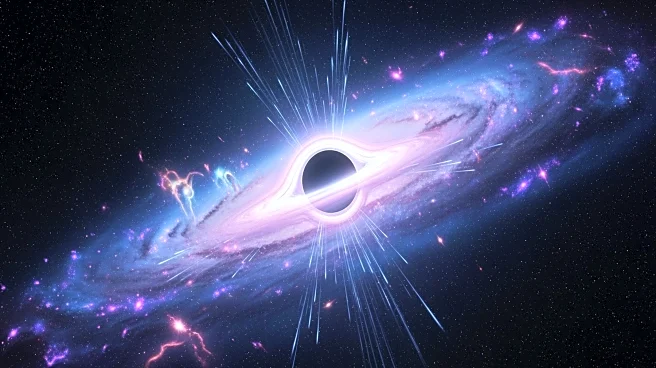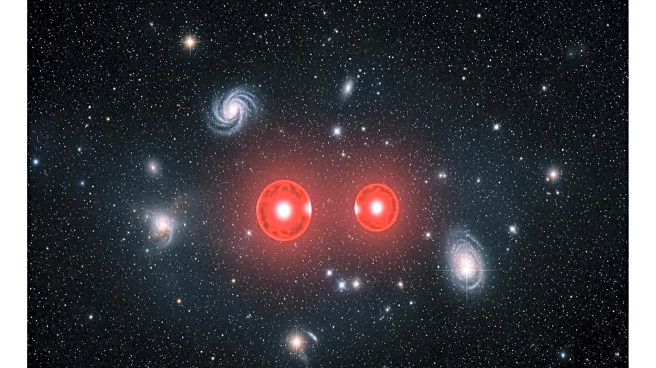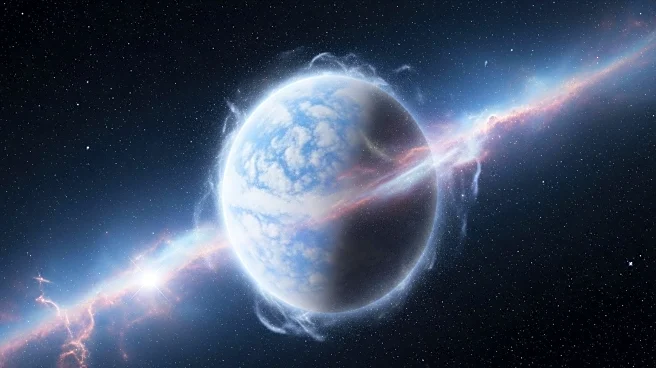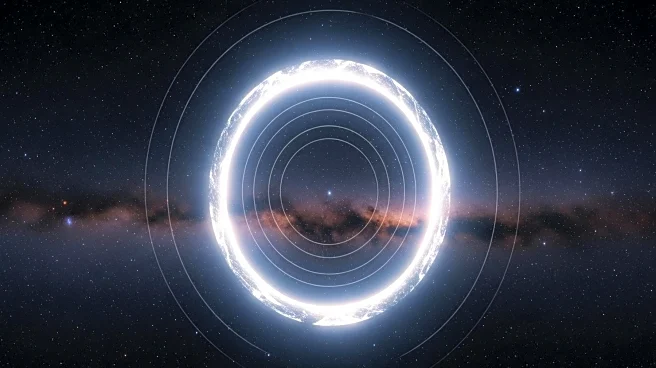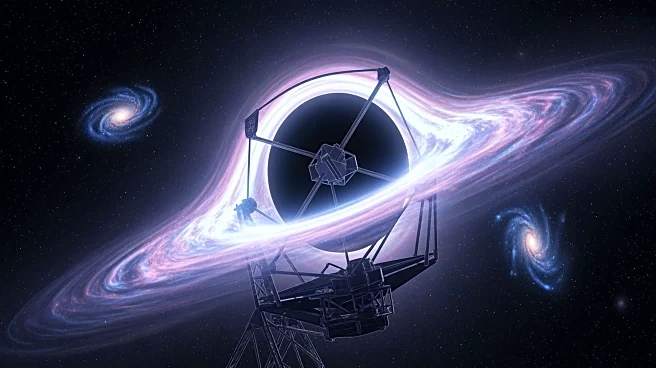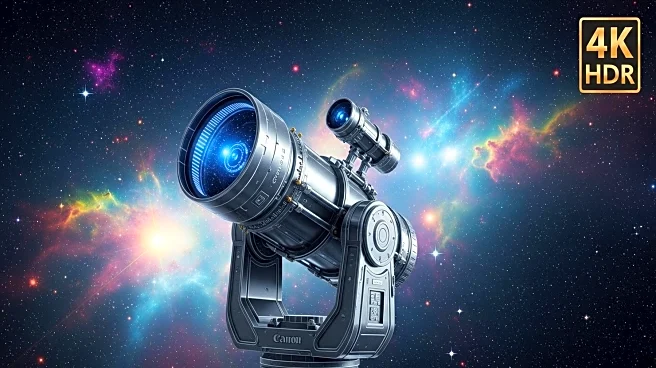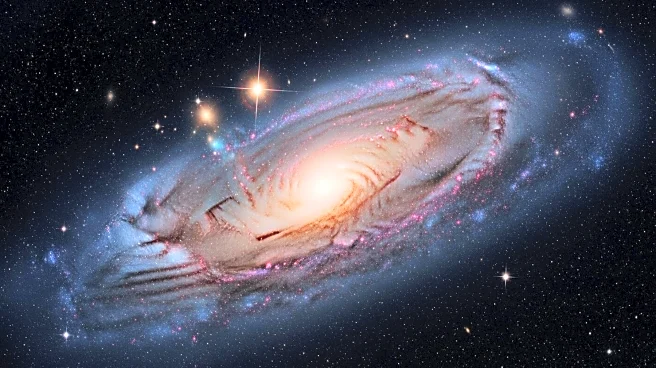What's Happening?
NASA's James Webb Space Telescope (JWST) has captured the clearest infrared image of the jet emanating from the supermassive black hole at the center of the galaxy M87. This observation, published in Astronomy
and Astrophysics, reveals new details about the jet, including a twin stream being ejected in the opposite direction. The image shows the jet as a luminous pink ribbon against a hazy background, extending thousands of light-years from the black hole. The team, led by Jan Röder from the Institute of Astrophysics of Andalusia, used Webb's Near Infrared Camera to isolate the jet by subtracting starlight, dust, and background galaxies. This detailed portrait of M87's outflow is the most intricate infrared capture to date, highlighting features such as 'knot L' and 'HST-1', which exhibit varying emission properties.
Why It's Important?
The detailed imaging of M87's jet by the James Webb Space Telescope provides significant insights into the dynamics of supermassive black holes and their jets. These jets are considered natural laboratories for extreme physics, offering a deeper understanding of particle acceleration and magnetic field interactions. The ability to observe these phenomena in such detail helps astronomers trace the behavior of particles at near-light speeds, contributing to the broader knowledge of cosmic structures and their evolution. This advancement in imaging technology could lead to breakthroughs in understanding the role of black holes in galaxy formation and the universe's overall structure.
What's Next?
Continuous observations by the James Webb Space Telescope are expected to further unravel the complexities of M87's jet and its interaction with cosmic surroundings. Future studies may focus on the materials constituting these jet streams and their impact on the galaxy's environment. The ongoing research aims to piece together a complete picture of the jet's dynamics, potentially leading to new discoveries in astrophysics. As astronomers continue to analyze the data, they anticipate uncovering more about the extreme conditions near supermassive black holes.
Beyond the Headlines
The observations of M87's jet not only enhance scientific understanding but also raise questions about the ethical implications of space exploration and the allocation of resources for such endeavors. The pursuit of knowledge in astrophysics must balance with considerations of environmental impact and the prioritization of scientific goals. Additionally, the cultural fascination with black holes and cosmic phenomena continues to inspire public interest and support for space missions.
